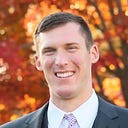Newsletter 004: Conceptual Models and Learning
In the previous newsletter, I discussed schema and working memory. Schema are small parts of knowledge and skills; working memory is a part of your brain that processes information.
Here is Belcher’s Model for Learning (yes, I’m continuing to send this image in every email — returning to the same image with more information is how we create strong memories!)
Ideas
One major theory of learning is known as Constructivism. This theory argues that learning happens as we build — or construct! — knowledge and skills, taking small parts of the knowledge and skills and attaching the small parts into bigger and bigger parts.
As a reminder, the small parts of knowledge and skills are known as schema; a schema can be defined as the “basic unit of knowledge or skill that relates to any aspect of the world.”
An individual schema is a tiny slice in a part of knowledge and skills. Even if you are a novice at a certain topic, most of what you know is many individual schema combined into larger schema. By the time you are an expert in a topic, you have an incredibly high number and densely-connected network of schema stored in your long-term memory.
Sets of schema that combine are given a new name; this name is conceptual model. A conceptual model can…
